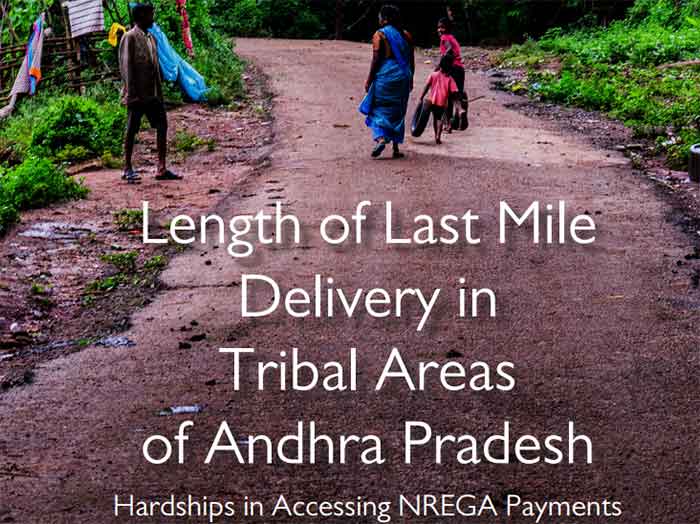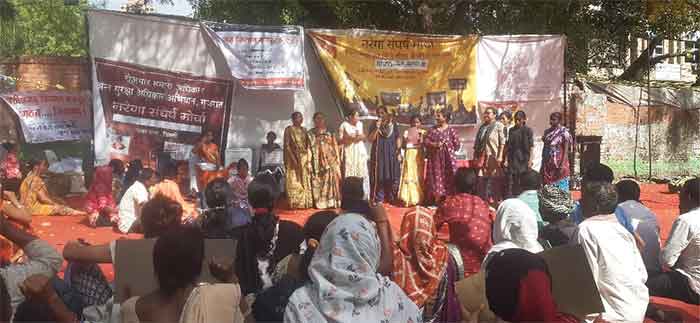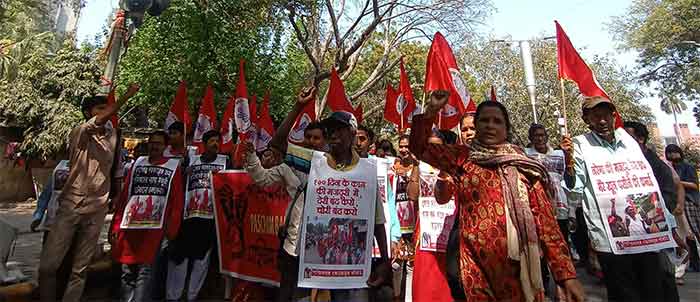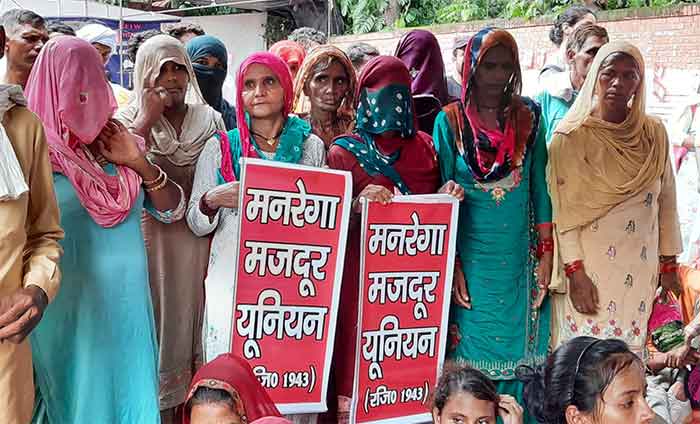
While the Mahatma Gandhi National Rural Employment Guarantee Act ( MG-NREGA or simply NREGA)has certainly provided an important means of improving rural livelihood prospects, it is increasingly clear that its implementation problems are increasing, and this is particularly true this year.
As is well known NREGA enacted about 16 years back was widely regarded as a very important achievement of the UPA/Congress government. At a time of the state withdrawing from such responsibilities in many countries, this was seen internationally too as a very important initiative, particularly in the Global South.
The initial response of the NDA/BJP regime towards NREGA was discouraging, but better counsel prevailed and realizing its importance this was continued. During COVID its importance was particularly acknowledged by almost everyone in terms of its ability to provide an important means of survival in very difficult times when so many migrant workers were returning to villages in desperate conditions. Increased allocation for NREGA became a very important component of the special COVID package announced by the government in financial year 2020-21.
As a result the NREGA allocation peaked to Rs. 111,000 crore this year. Even with this allocation the demand for work under NREGA was far from fulfilled and the pandemic related distress was not going to vanish suddenly. So there was demand as well as expectation that the increased 2020-21 allocation will be at least retained if not increased further next year, but this was reduced to just Rs. 73,000 crore. As anticipated, this led to extreme problems of unmet demand and delayed wages, causing much distress.
So later in the year the government had to allocate additional Rs. 25,000 crore, taking the total allocation to Rs. 98,000 crore in 2021-22 Thus even the increased or revised allocation this year was lower than the amount spent in the previous year, while the delay in increasing the allocation led to avoidable problems of delayed wages. At the end of the financial year substantial dues of wages, or material payments or administrative expenses remained.
This year at the time of the presentation of budget again a reduction relative to last year’s revised estimate was made by allocating only Rs. 73,000 crore. A calculation made by a monitoring group People’s Action for Employment Guarantee ( PAEG) revealed the very uncomfortable reality that if the same number of people apply for work as in the previous year , this allocation will be adequate to provide only 21 days work in a year, as compared to the legal entitlement of 100 days.
The result of the much lower than essential allocation has been that with actual expenditure of Rs. 36,112 crore in the first 4 months of the financial year ( up to July 31) and outstanding unpaid dues of Rs. 12,390 crore, the government is now left with only 24,498 crore or 33% of the allocation for the next 8 months! So if there are reports of inadequate work and delayed wages, there are reasons for this.
To give examples from only one state, recent reports indicate increasing problems in the implementation of MG-NREGA in Himachal Pradesh, the most disturbing aspect being the long delays in the payments of workers.
A front page, top news report in a leading newspaper of this region Amar Ujala stated on April 28 2022, “ in most gram panchayats of Himachal Pradesh daily wage payments of thousands of workers have been held up while development works worth crores of Rs. have also been held up. Although wage rate has been increased by Rs. 9 from April 1, but several panchayats have not yet been able to clear the labour component payments of even March. Due to lack of budget several panchayats have not been able to purchase cement and other materials since December 2021, nor has it been possible to make the payment for what was procured. So development works have come to a standstill even as the rural development department is saddled with payment of dues worth Rs. 10 crore.”
In this context it is also useful to look at the report of the Parliamentary Standing Committee on rural development schemes in mid-March his year. The Parliamentary Committee has mentioned that there was corruption in the implementation of MG-NREGA as well as delays in wage payment. The Committee spoke of lesser money reaching ‘genuine’ workers due to corruption. Another problem mentioned by the Committee related to late uploading of muster rolls which also resulted in delays in wage payment. A lot of problems were related to lack of timely availability of adequate budget. Thus, as per the Committee findings, what is being seen at present in Himachal Pradesh is part of a wider trend, although the situation may differ to some extent in various states.
To place the situation in proper perspective and to appreciate the real plight of NREGA workers, here we may point out that the present problems have come on top of pre-existing dues and delays. To give an indication of this, the Tribune had reported on November 7, 2021—( report by Subhash Rajta titled ‘MGNREGA workers in Himachal sans wages for over two months’ ), “ Payments have not been made for MGNREGA work over the past two months, leaving lakhs of workers in distress.” This report also quoted panchayat representatives as stating that while there may have been delays in making payments for materials even earlier, there had never been such long delays in wage payments before this.
The rule-based payment system of MG-NREGA is to make the payment within 15 days, and for any delay beyond this there is provision for adding compensatory additional payment but this is seldom given.
Clearly there is urgent need for setting up a proper system of timely wages in MG-NREGA and for ensuring a proper budget for this. Here it may also be pointed out that several NREGA monitoring organizations such as NREGA Sangharsh Morcha, PAEG and Right to Food Campaign have been giving advance warnings that reduction in the budgetary allocation for this year, compared to the revised estimate for the previous year, will lead to failure in providing adequate work and/or making timely wage payments. These organizations have in fact pleaded for making a significant increase in the budgetary allocation for NREGA compared to the previous year, and have backed their demand with detailed calculations of the actual need. This is a demand based program with entitlement assured by law, and so the government must take care to provide adequate budget for this.
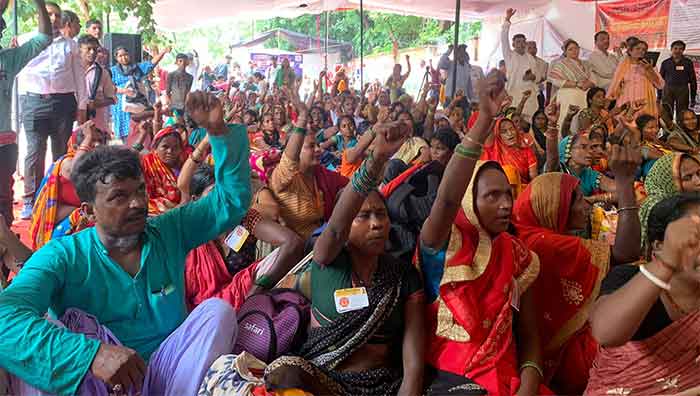
Recently the NREGA Sangharsh Morcha organized a 3 day protest in Delhi from August 2 to 4 in which hundreds of NREGA workers from different parts of the country participated. While highlighting the urgent need to increase NREGA allocation this protest also highlighted the facts that the notified NREGA wage increase has lagged behind the rural inflation rate and that the actual wage paid is less than the notified wage. What is more, the average NREGA wage is much below the legal minimum wage recommended by the experts committee in 2019.
Bharat Dogra is Honorary Convener, Campaign to Save Earth Now. His recent books include Man over Machine and India’s Quest for Sustainable Farming and Healthy Food.




